September 2011 Game Design Showdown - "Stick Around"
Please Read: Details on entering the Game Design Showdown.
We have a winner!
With 6 votes, the winner of the September GDS is Over There. Runners up with 5 votes each: Last Bot Standing and Nations of the World. Wheel of History, Gods and Heroes, and Shootout at El Tiroteo finished with 4, 3, and 2 votes, respectively.
Congrats to the winner and runners up (close one this time)! The critique thread is now open.
Main Design Requirements:
- Component Restriction: Permanence
One of the fundamental aspects of board games nowadays is that they start out the same way every time. This year Hasbro released Risk Legacy, a game in which game state information is permanently recorded, making subsequent plays fundamentally different than the last.
This month's challenge is to create a game which incorporates such permanent changes to some or all of its components, allowing the game world to grow or change from play to play.
It's true that in probably every case, any such permanent change could be done without physically altering game components, allowing the game to be played again from the beginning by a new group, but where's the fin in that? For this challenge, the components must change permanently and physically. When the challenge is over you're welcome to modify the game to track those changes some other way...
Theme Restriction: None.
No restriction on theme this month - be creative!Mechanics Restriction: None.
This month you're free to be creative and use whatever mechanisms you like in your game.
- Submissions: Thursday, 1-September-2011 through Thursday, 8-September-2011.
- Voting: Through Thursday, 15-September-2011. PM your votes to sedjtroll.
- Voting Format: Each person has 6 votes to distribute any way they choose among the GDS entries with the following restrictions:
-
- You may not assign any votes to your own entry!
-
- You may not assign more than 3 votes to any single entry.
- You need not assign all 6 votes.
Comments or Questions: Comments and questions about this Challenge were handled on the Comments Thread.
- CRITIQUES: After voting has closed the entries will be posted for comments and critiques. Post constructive critiques and commentary about the entries to this Challenge in the Critiques Thread
- GDS Details: For more details on how these Game Design Showdown Challenges work, especially the details around the word count and graphics limits, visit the GDS Wiki Page.
Enjoy, and good luck!
-Seth









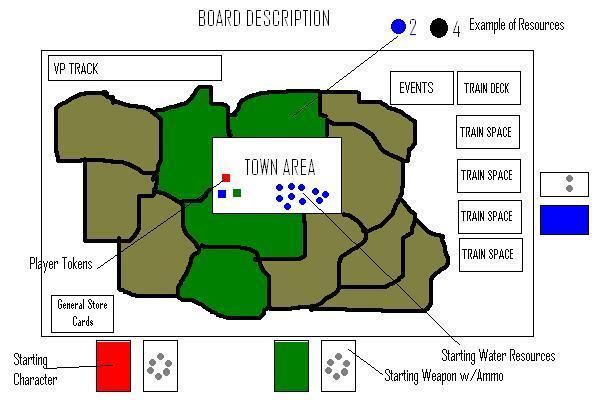
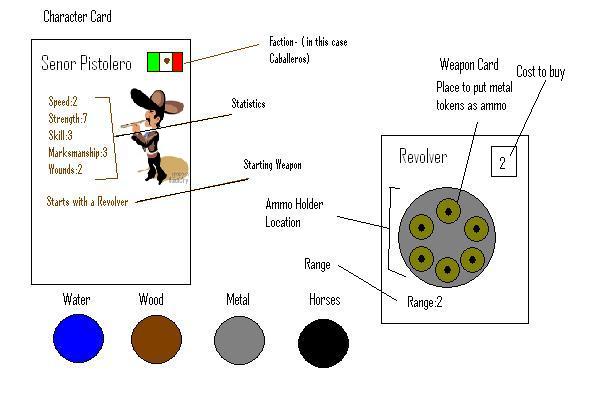
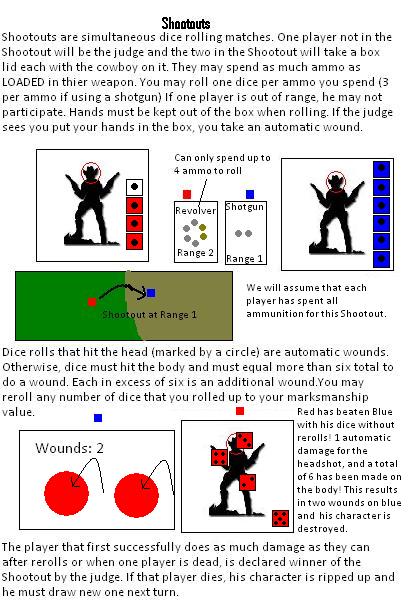

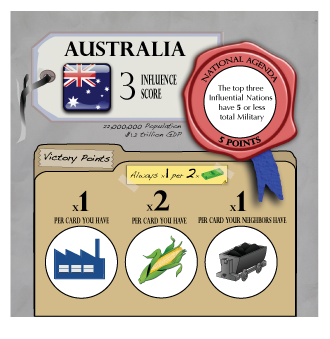
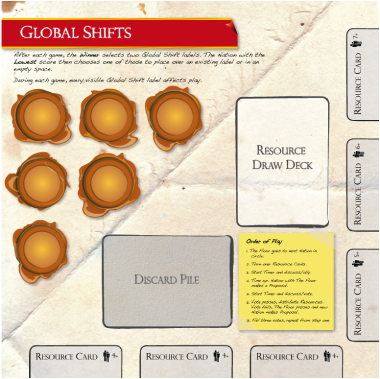

Over There
A permanent game for two players
This war, like the next war, will be a war to end war. - David Lloyd George
“Over There” is a card-driven war game that simulates not just a single battle, but, over the course of many games, the entire First World War. As players vie for control points and inflict casualties, the terrain, technologies, and the armies themselves change forever.
Components
Terms
Set-up
Subsequent Set-Up
Same, except: 1. Players choose their eight starting units (any mix, but no fresh leaders) and Reinforcements (must be 3:21). 2. One/both player(s) may choose to NOT place new stars 3. Place ALL researched techs in play.
Gameplay
On his turn, a player may do any DIFFERENT TWO of the following:
Finally, score 1 glory/controlled (occupied) point. Enemy cities are worth 2 glory, but grant you no combat bonus.
Movement/Attack
Troops can move up to their distance in any orthogonal direction. Two units may not occupy the same space but can move through if they have 2+ movement.
If movement brings an enemy unit in range, or if you choose to attack without moving, you may attack. Announce target. Both players reveal and roll 1d6/combat value (if target is in range). For every value a player rolls (modified by terrain), he applies the following:
Permanently upgrade unit on a NATURAL 6, once per combat.
Retreats move 1 away from enemy unit, which, if adjacent, “takes ground”. Cannot retreat to an occupied space. If a unit must retreat but cannot, it is wounded.
If wounded, tear off a corner. A wounded unit with one corner remaining is instead removed from play. A removed leader is destroyed. Both are worth 5 Glory for their owner this game.
Activate Leader
Besides regular combat, each Leader has a special power you can activate, such as “over the top, boys!” (adjacent units move), “stiff upper lip” (extra defense dice), etc. These become more powerful with upgrades.
Recruit
Draw your top Reinforcement. Place it face-down on one of your unoccupied cities OR on the back row of the board. If an enemy is adjacent to one or more of your unoccupied cities, one of your actions MUST be a recruit there.
Research
Take the top tech card, ripping the corner. Show it to your opponent, then place it face-up by the board. If this was your last tech, for the next set-up BOTH PLAYERS will shuffle the next level of techs into their decks.
Persistent techs change the rules. Example: “Propaganda” changes your “recruit” action to draw 2/select 1, forever. Some persistent techs require you to destroy conflicting techs.
Some techs are obsolesced when the next-level tech appears; destroy them.
Activate Tech
Techs with activation powers (“Dig In”, “Air Recon”, “Artillery”, etc) may be activated, as with Leaders. Once-per-game techs (“Poison Gas”, “Better Weapons”) are flipped to indicate use.
End/Winner
The game ends IMMEDIATELY if you achieve your objective or possess 30 Glory. You win!
Alternately, when a player runs out of recruitment cards, whoever has more Glory wins.
Winning side and score is marked. Winner does ONE of these:
Loser chooses a DIFFERENT benefit.
War End
If a player occupies ALL enemy cities at game end, they win the war. Alternately, whoever has won the most games out of 20.